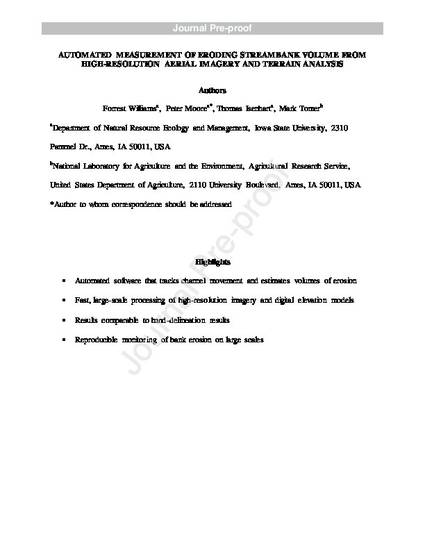
Excessive sediment is an important form of surface water impairment throughout the continental United States. Numerous studies have investigated the role of upland soil erosion as a source of sediment and phosphorus, but contributions of streambank erosion are still poorly understood. Current methods such as delineation and automated channel planform morphometric models are either too time-intensive, or do not provide adequate spatial resolution to measure smaller rivers over large scales. To estimate sediment contributions from river migration on large scales, we have created the Aerial Imagery Migration Model (AIMM), a Python and ArcPy based automated channel migration model designed to estimate volumes of erosion and deposition related to channel migration. AIMM utilizes the Normalized Difference Water Index (NDWI) to derive binary representations of river channels from aerial photography. The location of the channel is then compared between two time periods to identify zones of erosion and deposition and the volume loss related to channel migration is then calculated using a LiDAR-derived DEM. When compared to three delineations and the RivMAP model in the South Fork Iowa River watershed, AIMM was found to have a 98% agreement with RivMAP, 79% agreement with delineations, and predicted net sediment flux that was within one standard deviation of the mean prediction from the delineation analysis. Where public imagery is available, AIMM can be widely applied to estimate volumes of sediment loss in a time and cost-efficient procedure. In particular, the use of AIMM within the project-planning phase of conservation efforts could help focus resources in areas where they can have the most impact.
Available at: http://works.bepress.com/thomas_isenhart/65/

This article is published as Williams, Forrest, Peter Moore, Thomas Isenhart, and Mark Tomer. "Automated measurement of eroding streambank volume from high-resolution aerial imagery and terrain analysis." Geomorphology 367 (2020): 107313. doi: 10.1016/j.geomorph.2020.107313.